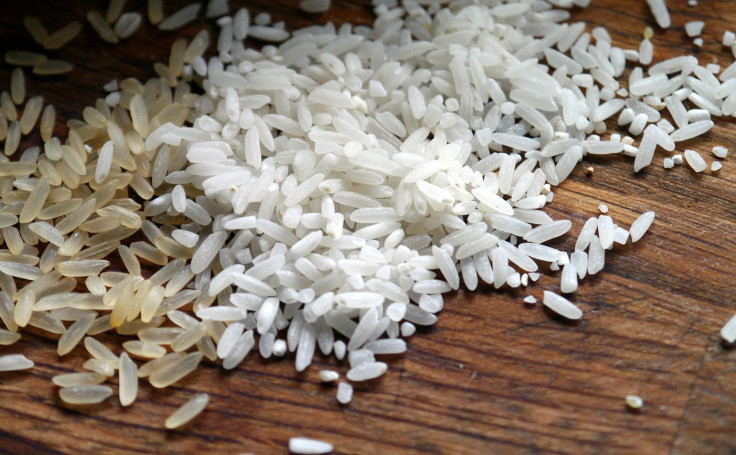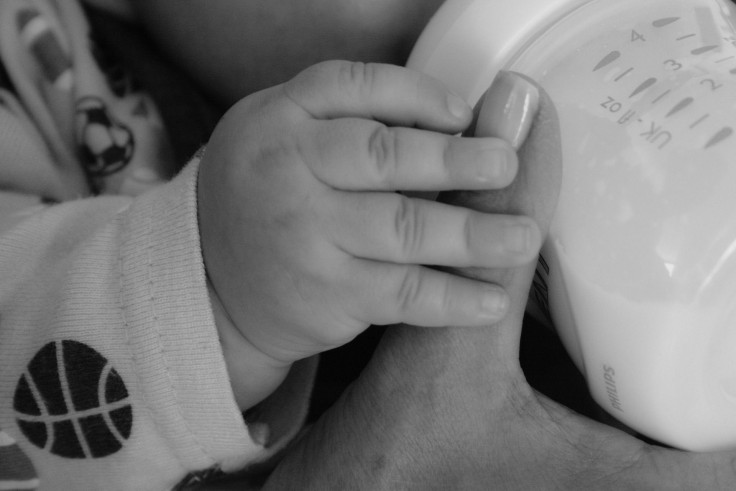Arsenic In Rice Affects Babies More; Urine Analysis Reveals High Levels Of Toxin

Pediatricians always recommend rice among the first solid foods babies should eat because of how gentle it is on their stomachs, but according to new research published in JAMA Pediatrics, babies who ate rice and products made from rice had higher levels of arsenic concentrations in their urine. Researchers from Dartmouth College School of Medicine tested infants from the time they were born until their first birthday and warn they may be consuming far more arsenic than is actually safe.
Arsenic is a naturally occurring element in the earth’s crust that is often added into pesticides and poultry feed and travels into our food and water supply. Rice absorbs arsenic more readily than other crops, turning it into a potential carcinogen in the food supply. According to the U.S. Food and Drug Administration (FDA), long-term exposure to arsenic is linked with higher rates of skin, bladder, and lung cancers, in addition to heart disease. Arsenic exposure in utero and during infancy has been linked to side effects during fetal growth along with the child’s immune system and neurodevelopment. Given the potential dangers, the FDA released a warning that recommends parents consider options other than rice cereal for a child’s first solid food.
In order to measure arsenic levels in comparison to infants’ diets, the research team checked in with the infants every four months over the course of a year and asked their parents to begin a food diary to record their children’s dietary patterns, including whether or not they had eaten rice cereal, white or brown rice, or foods made with rice, such as snacks, rice syrup, or cereal bars.

Researchers found when they tested 759 infants born to mothers between 2011 and 2014, 80 percent were introduced to rice cereal within the first year of life, and 64 percent of those infants started between 4 to 6 months of age. At the end of the 12-month study, just two days before researchers collected urine samples, 55 percent of infants had consumed a rice product, 43 percent ate a rice product within the week, and 24 percent had rice or a sweetened rice syrup between five to six times that week.
According to their findings, not only did the infants’ consumption exceed the FDA’s guidelines, but also the World Health Organization, the Food and Agriculture Organization of the United Nations, and the European Union's regulations. The study’s authors wrote: "Our results indicate that consumption of rice and rice products increases infants' exposure to As [arsenic] and that regulation could reduce As exposure during this critical phase of development."
Rice comes in a variety of different forms, including rice milk, rice cereal, rice crackers, and rice-based baby food. Because children weigh less, they are exposed to more arsenic per pound from the foods they eat. For example, one serving of rice pasta or two cups of rice milk exceeds the weekly safety threshold, according to Consumer Reports. For adults, two servings of rice or rice cereal are enough to hit the weekly limit.
How can you lower the risk of arsenic exposure for you and your family? Brown rice contains 80 percent more arsenic compared to white rice because the chemical accumulates in the outer layer of the grain, which is removed when processed into white rice. White basmati rice from India, Pakistan, and California contain the least amount of arsenic. Some varieties of rice contain more arsenic than others, and fortunately there are others grains that can substitute for rice and rice products, like amaranth, millet, and quinoa. Baby Center recommends skipping cereal and instead feeding your baby iron-fortified cereals made from grains like oats, barley, and wheat.
Source:Cottingham KL, Karagas MR, Punshon T, Sayarath V, Jackson BP, and Folt CL. Association of Rice and Rice-Product Consumption With Arsenic Exposure Early in Life. JAMA Pediatrics . 2016.



























